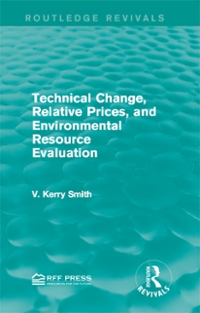Question
I need a valid citation and reference with page number In this Assignment, you will define and calculate the remaining six major cost elements of
I need a valid citation and reference with page number In this Assignment, you will define and calculate the remaining six major cost elements of a business, when given the total costs and the quantity produced, as well as use the computed costs to determine a minimum cost output level for that business. In addition, you will also clearly explain how the average total cost of a new output level is affected by its share of fixed costs and variable costs. Questions 1. When ONLY Total Costs (TC) are known, explain how to calculate each of the following: a. Fixed Costs (FC) (1 point) The fixed costs per unit is figured out by dividing the total Fixed costs from the expense of business by the amount of units. (Krugman,2018) (Krugman & Wells, 2018, p. X) The question asked only about fixed costs, not average fixed costs. b. Variable Costs (VC) (1 point) The total variable expense/cost is summed by using multiplication to the total amount pf units by the VC per unit. (Krugman, 2018) (Krugman & Wells, 2018, p. X) Incorrect. c. Average Variable Costs (AVC) (1 point) It would be the breaking even point in the units =Fixed costs / (Sales price for each unit (Incorrect) - minus the variable cost per unit. (Krugman, 2018) (Krugman & Wells, 2018, p. X) d. Average Total Costs (ATC) (1 point) The sum of all production expense divided by the amount of output produced. (Krugman, 2018) (Krugman & Wells, 2018, p. X) e. Average Fixed Costs (AFC) (1 point) The amount of all fixed expenses of production divided by the amount of output (Krugman, 2018) (Krugman & Wells, 2018, p. X) f. Marginal Costs (MC) (1 point) The Marginal cost is the difference in the total cost divided by the change in the amount of the output. (Krugman, 2018) (Krugman & Wells, 2018, p. X) 2. Table 1 shows the hourly production and Total Cost estimates for a new manufacturing firm wishing to enter the smartphone market. Fill in the blank cells in columns a., b., c., d., and e. on the table by computing the appropriate values. Table 1 Smart cell phones produced in a hour Total Cost (TC) Variable Cost (VC) 2points) a. Average Variable costs (AVC) (2 points ) b. Average Total Cost ( (ATC) (2 points) c. Average Fixed costs (AFC) d. Marginal Cost (MC) (3 points) e. Smart cell phones produced in an hour Total Cost (TC) Variable Costs (VC) (2 points) a. Average Variable Costs (AVC) (2 points) b. Average Total Costs (ATC) (2 points) c. Average Fixed Cost (AFC) (2 points) d. Marginal Cost (MC) (3 points) e. 0 $3,200 0 n/a n/a n/a n/a 15 $3,525 52875 3525 3995 3760 235 30 $3,875 116250 3875 4131.33 4004.16 129.16 45 $4,250 191250 4250 4438.88 4344.44 94.44 60 $4,650 279000 4650 4805 4727.50 77.50 75 $5,075 380625 5075 5210.33 5142.66 67.66 90 $5,525 497250 5525 5647.77 5586.38 61.38 105 $6,725 706125 6725 6853.09 6789.04 64.04 120 $8,210 985200 8210 8346.33 8278.41 68.41 135 $9,950 1343250 9950 10097.40 10023.70 73.70 Your calculations are incorrect in this table. 3. Based on your calculations in completing the table in Question 2, what is this manufacturer's minimum cost output level? Explain your answer. (3 points) The larger the output , the greater the amount of variable input required to produce additional units , leading to higher average variable cost. Incorrect. 4. According to textbook page 334, when one additional unit is produced, two factors directly impact the change in average total costs, the Spreading effect and the Diminishing Returns effect. In the following two situations, explain how the factors of the Spreading effect and the Diminishing Returns effect cause the average total cost to be The larger the output , the greater the quantity of output over which fixed cost is spread, leading to lower average fixed cost. (Krugman, 2018) (This may be true, but it doesn't answer the questions asked. Further, it isn't with either question a or question b, so there is no way of know which question you may be addressing.) a. Production of the 10th Gizmo resulted in an average total cost (ATC) of $20, but production of the 11th Gizmo resulted in an average total cost of $22. (3 points) No answer b. Production of the 10th Gizmo resulted in an average total cost (ATC) of $20, but production of the 11th Gizmo resulted in an average total cost of $18. (3 points) No answer Krugman, P. R., & Wells, R. (2018). Microeconomics (5th ed.). New York, NY: Worth Publishers, Macmillan Learning. The title of the book should be in italic print. -------------------------------------------- References: Unit 7 Assignment: Fixed Costs and Variable Costs Possible Points Points Earned Overall Writing: 8 Used correct file name in uploading assignment document. 1 -1 Demonstrated concerted effort to utilize material from the textbook, Learning Activities, and/or seminars to answer questions. 3 -2 Correctly formatted in-text citations and listed at least ONE reference. (At this point in the class, you should be able to use the correct citations and list the reference for our textbook correctly. I provide it every week in our announcements and on the discussion board. You can copy and paste them and change the page number in the citations.) 3 -3 Used standard English with few or no grammatical errors. 1 Individual Questions: 32 1.a. Correctly explained the calculation of fixed cost. 2 -2 1.b. Correctly explained the calculation of variable cost. 2 -2
Step by Step Solution
There are 3 Steps involved in it
Step: 1

Get Instant Access to Expert-Tailored Solutions
See step-by-step solutions with expert insights and AI powered tools for academic success
Step: 2

Step: 3

Ace Your Homework with AI
Get the answers you need in no time with our AI-driven, step-by-step assistance
Get Started


